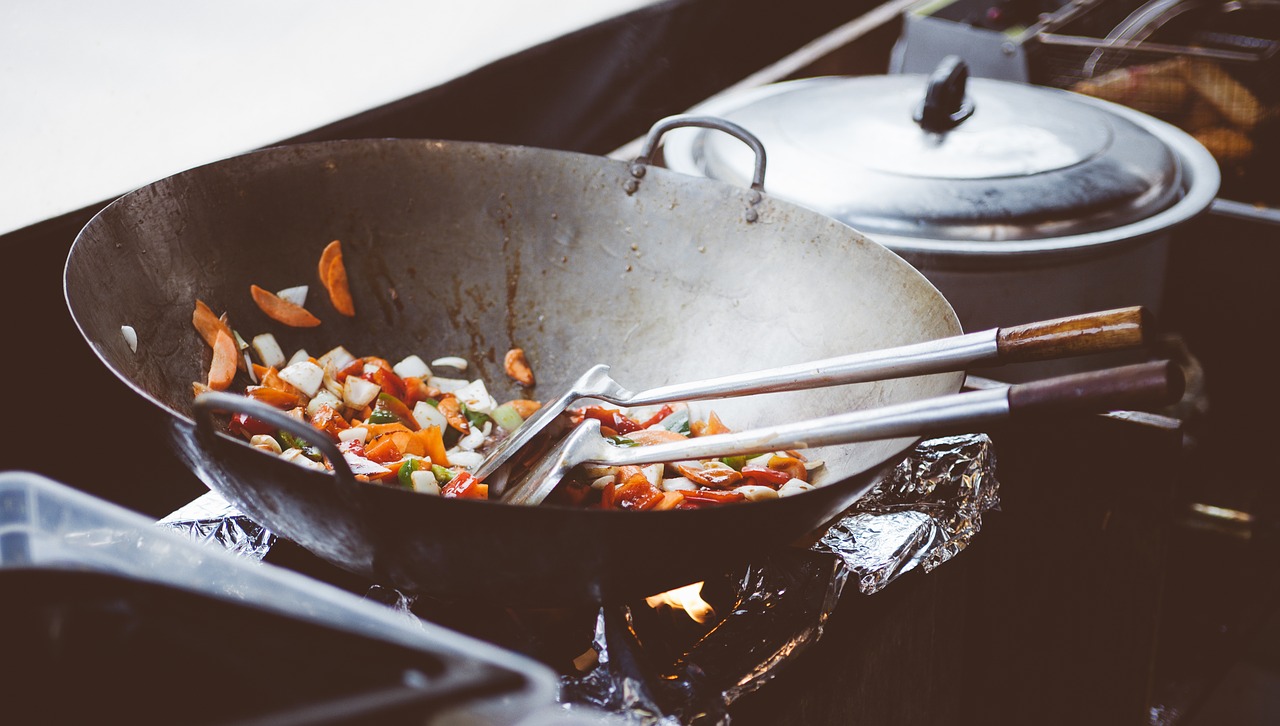
COOKING WOKS
Review Guide
Once you’ve cooked with a wok, adding one to your kitchen will be something you’ll wish you had done a long time ago. Sometimes, home chefs feel intimidated by the seasoning process required to maintain a wok, but you will be pleasantly surprised to find how simple caring for a it really is.
Its ease of use, quick cook time and delightful flavoring make it a kitchen essential that gives back. Join us as we explore this iconic pan and discover how it can make your daily meal preparation more enjoyable.
Woks: What are They?
Woks are wide and deep cooking pans with a flared shape. They are designed to withstand heat and can sear ingredients quickly to create a satisfying charred flavor. Chinese cooking relies heavily on them.
Why Are These Pans So Popular?
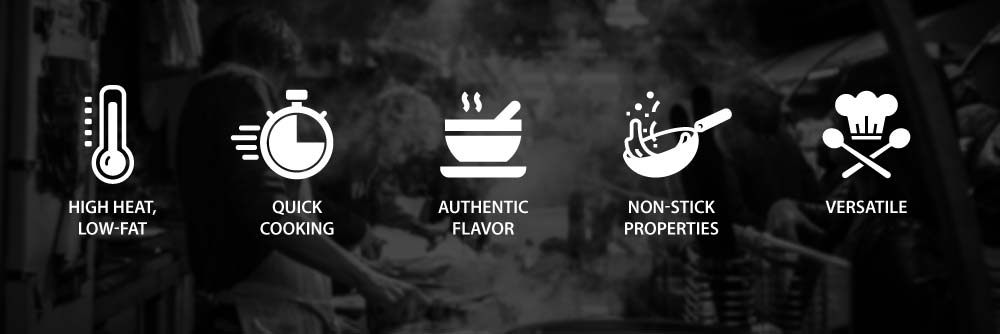
Though the wok was first contrived in China, it has gained popularity across multiple continents because of its versatility. These are just some of the reasons this innovative pan is stealing hearts worldwide:
- Built to withstand increased heat, only a small amount of oil is needed to sear your food for a healthy, low-fat meal.
- Cook food quickly. Crank the heat up and have yourself a full meal in 10 minutes or less.
- Just because you’re cooking or braising with minimal fat, doesn’t mean you can’t have flavor. The oxidized seasoning oil that rests in the pores and imparts a luxurious smoky flavor called “wok hei” to anything prepared.
- When seasoned properly with high-smoke point oil, it becomes nonstick–even without a Teflon factory coating.
- Eggs, stir-fry, noodles, fish, meat, rice, curries–you can cook such a wide variety of dishes that makes it the only pan you really need in the kitchen.
- Find cookbooks that are designated to feature this cooking method.
Other Popular Posts
- Super Plus Size Compression Stockings https://comprogear.com/super-plus-size-compression-stockings/
- Compression Socks Men https://comprogear.com/compression-socks-men/
- Plus Size Compression Socks https://comprogear.com/plus-size-compression-socks/
- How Long To Wear Compression Socks for Edema? https://comprogear.com/how-long-to-wear-compression-socks-for-edema/
Where Did Woks Originate From and Why Are They Shaped the Way They Are?
The word “wok” has Cantonese roots. Yet the wok as we know it today may have been in existence long before it emerged in Chinese culture. What we do know is that the Chinese helped popularize the wok across Asia.
In the tombs of the Han Dynasty royals, researchers discovered miniature replicas of pans similar to a wok, suggesting it may date back as far as 200 BC. Historians also believe the Mongols, a nomadic group that lived on the continent of Asia, may have carried the wok with them and shared it with the people they encountered in their travels.


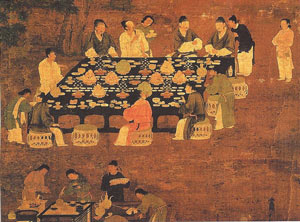
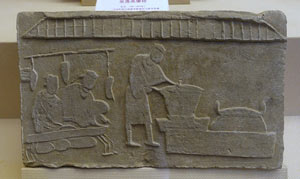
With limited access to fuel, the wok was considered an attractive food preparation tool. It heated quickly, cooked efficiently and retained heat for longer than other styles of pans. Overall, less fuel and time was needed to prepare meals with a wok.
Traditional Chinese woks have a round bottom, which likely originated from food preparation over open fire. The deep, wide design maximized the cooking space available and kept food from spilling out.
Some things have changed since the very first classic wok. Upon the advent of flat stovetops, flat-bottomed alternatives were developed. And while conserving fuel is no longer a top priority for most cooks, the speed at which a meal can be prepared makes it as attractive as ever. Popular chef Joyce Chen helped grow its popularity and use in the typical kitchen.
What’s the Best Wok Overall ?
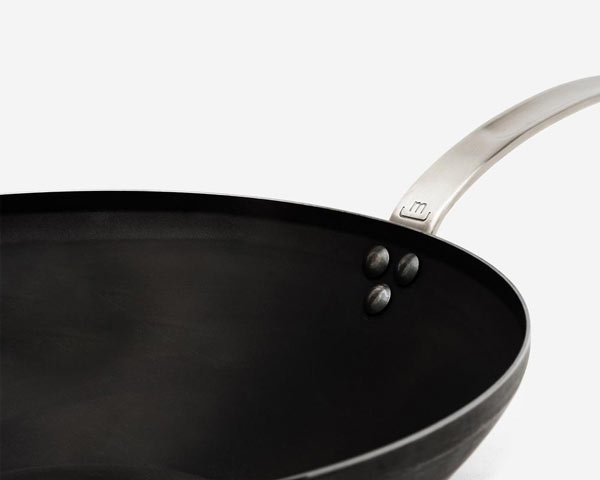
Carbon steel really is the ideal material for a wok. You’ll find most options to be affordable, great at conducting heat and hardwearing. If you invest in a superior quality carbon steel wok, it will last for a lifetime.
If you’re looking for a wok that is made with the modern kitchen in mind, the Made In Blue Carbon Steel Wok is for you. This flat-bottomed model is ideal for electric cooktops and gas ranges alike. No ring is needed. Instead, the Made In Wok sits directly against the heat source to facilitate optimal heat transference.
Often, round-bottomed woks are superior when it comes to evenly heating the sides of a wok. But the thin-walled design of the Made In enables maximum heat distribution, so you can stir fry across every inch of it.
Home kitchen cooks, industry professionals and the media have all been captivated by this heavy gauge, reliable wok. The New York Times praised the Made In’s ability to heat quickly while providing safety to the cook with its extended arm. And Good Housekeeping awarded it the title of “Best Heavy Duty Wok”.

Take a look at the specs that make Made In Blue Carbon Steel Woks stand out:
- A reasonable diameter of 12.5” means it is large enough for a full meal but still fits nicely on a domestic stovetop.
- Weighing 4.6 pounds., it is light enough to lift with one arm and maneuver while cooking.
- A complimentary container with a mix of canola, beeswax and grapeseed oil come with it for optimal seasoning.
- The small pores make for a more polished finish than the classic cast iron.
- Seasoning the Made In is easy and versatile, so you can enjoy the benefits of a nonstick surface with minimal effort.
- A long, “stay cool” handle keeps your hand away from the heat as you stir the food.
Made In Blue Carbon Steel Woks offer the opportunity to make both professional and amateur cooks swoon. Dare we say, this one will outperform even the best traditional cast iron wok.
Dishes You Can Make


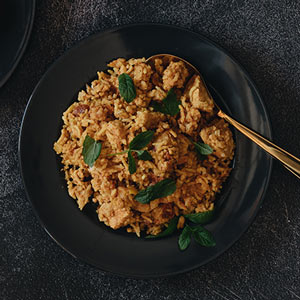

There are endless ideas and possibilities when it comes to cooking or braising with this pan. Here are a few kitchen ideas sure to sell at your next meal:
Chow Mein : With a mix of noodles, veggies and a protein, chow mein is the dish that has it all. You’ll be surprised how little time it takes to sauté the ingredients to perfection.
Moo Goo Gai Pan : This combo of mushrooms, forest vegetables and chicken is ideal for wok cooking. The flavorful sauce thickens quickly when added.
Stir-Fry : Perhaps the best-known wok recipe, stir-fry can be served on a bed of rice or with noodles. Tweak this recipe by food blogger Small Town Woman by adding your own selection of favorite veggies and a protein of your choice:
Stir-Fry Ingredients
- 1 ¼ lbs. Diced Chicken Breast
- 2 Tbsp. Soy Sauce
- 1 tsp. Chopped Ginger
- 1 ½ Tbsp. Cornstarch
- 2-3 Tbsp. Canola Oil
- 1 Small Diced Onion
- 1 Diced Bell Pepper (Any Color)
- 2 Large Carrots
- 2 to 3 Cups of Broccoli
- ½ lb. Asparagus
Stir-Fry Sauce
- 1 Cup Chicken Broth
- 2 Tbsp. Soy Sauce
- ½ tsp. Sesame Oil
- 1 Tbsp. Sugar
- 2 tsp. Rice Vinegar
- 2 Tbsp. Cornstarch
- Optional: 1 Tbsp Chopped Ginger, 1 Tbsp. Sambel Oleck
Popular Articles on ComproGear
Rose Toy Rose Vibrator Pillow Talk
Types of Woks
Nowadays, there is a wok for every occasion. Take a look at this comprehensive list of options to get ideas of where to start your search for the perfect one:
- Electric
- Carbon Steel
- Thin Cast Iron
- Thick-Walled
- Stainless Steel
- Flat-Bottomed
- Round-Bottomed
- Dual-Handle
- Miniature 8”
What’s the Right Kind?

Sometimes, depending on your living situation or lifestyle, some will suit you better than others. Are you searching for a wok to match any of the circumstances below?
Electric Stovetops : A flat-bottomed wok is best for cooking on a flat area such as a stovetop. Although you are able to use a ring or Chinese stovetop grate to accommodate a round-bottomed one, this will reduce the efficiency of heat distribution and prevent it from reaching maximum temperatures. You can also find one with riveted designs for easy cooking.
No Stove : If you don’t have a stovetop or find your stove doesn’t produce high enough heat, try an electric one. Since everything from eggs to veggies to noodles can be prepared in a wok, it can replace a stove in its own right.
Simply plug it in when needed. You can adjust the temperature settings to match the desired style of cooking, whether that be steaming, smoking or stir-frying. After it is cool and clean, stash it in your cupboard until the next meal.
Small Kitchens : Miniature woks are available in 8” and 9” diameters, which is a great option if your space is cramped. But if you go smaller than this, you may struggle to cook properly in the wok.
Opt for a pan that has a loop so you can hang it on the wall. This will save storage space in a cupboard or on the stovetop. Also look out for non-stick options that are not super heavy.
Traveling : Small woks in durable, light materials are ideal for traveling. Look for one that is made of a lightweight material such as carbon steel with a diameter of about 8”. Anything larger than this and you may not have space for it in your travel space or luggage.
Make sure the small wok is deep enough to allow for proper stir-frying. Note that traveling with an aluminum one is not recommended since it is a softer metal that is prone to surface damage. Riveted features can also come in handy.
What Are They Made Out Of?

You’ll find woks made of everything from cast iron to aluminized steel. The best material is one that conducts and holds heat relatively well.
Durable metals are ideal as it must withstand high heats, acidic foods and the use of metal cooking utensils. Carbon steel has become one of the most common metals for woks because it meets all of these standards. From carbon steel to stainless steel and much more, here are some different types to give you ideas of what works best for you.
The Best Carbon Steel
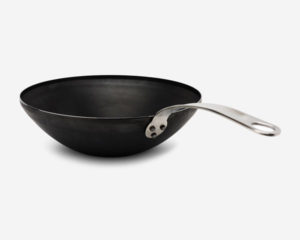

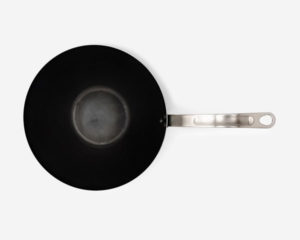
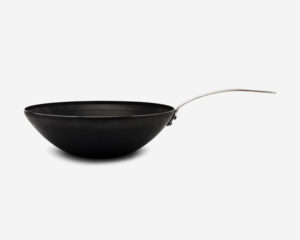
The Made In Blue Carbon Steel Wok plays on all the best features of a traditional wok, but with a twist. Designed for you to use on flat-top stoves, its lightweight, nonstick French construction makes it easy and versatile to toss your ingredients.
The Made In heats quickly and thoroughly, maintaining its seasoned non-stick surface during cooking. An essential of exceptional quality, this will be with you for life. Another type, like stainless steel, may not have the same non-stick qualities that make this type so valuable
The Best Cast Iron

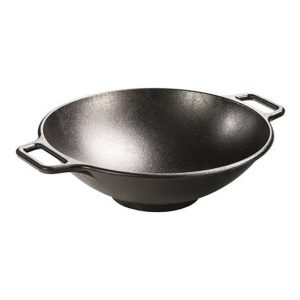
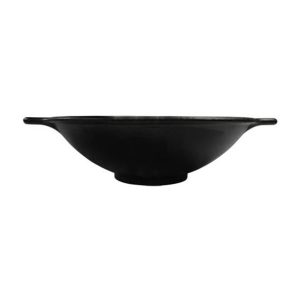
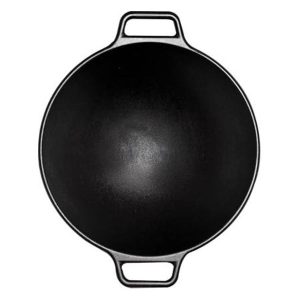
Take it from cooks and customers, the best cast iron wok out there is the Lodge P14W3 Pro-Logic Cast Iron Wok. You’ll get the best of both worlds with its round-bottomed interior mounted on a thick, flat base that allows for efficient heat distribution, even on an electric stovetop.
Weighing just short of 12 lbs., this is a sturdy, solid wok. The porous cast iron material holds its seasoning well, preventing food from sticking. Your food will have a slightly crispy texture when cooked in this.
The Pro-Logic Cast Iron Wok has a two-sided rather than one long-armed handle. When moving it, you may wish to cover each with a heat-resistant silicone cover such as the Lodge Hot Handle Holder, but oven mitts will work, too.
The Best Electric
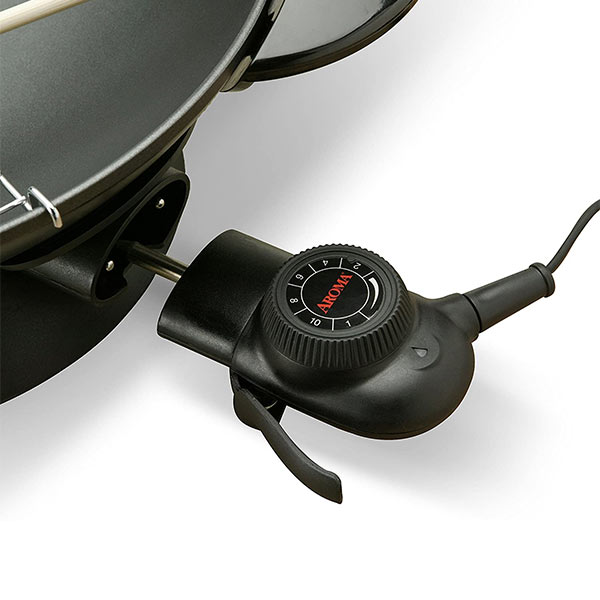

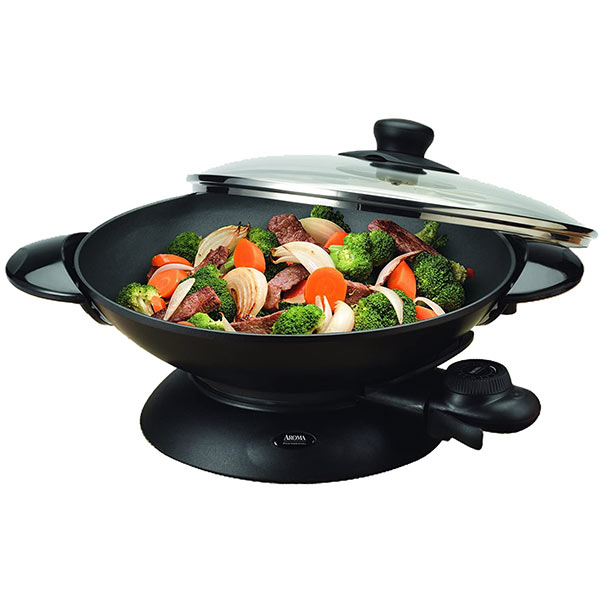
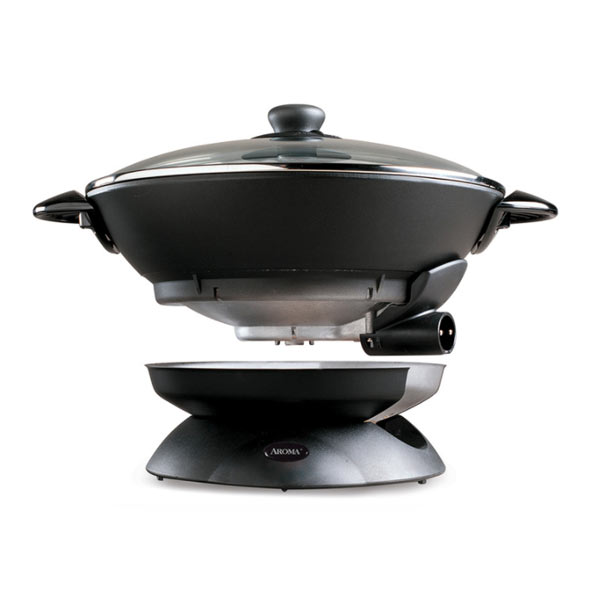
The Aroma Housewares AEW-306 5-Quart Electric Wok is a bit different than the others we have discussed so far. Its nonstick coating is similar to that of a Teflon pan than a classic wok, which means the Aroma Electric Wok is dishwasher safe (just remove the detachable base first).
It heats fast, so your meal can be done in five minutes or less. The Aroma Electric Wok also comes with ten different heats settings and a couple of steam/smoke racks, so you won’t be restricted to stir-fry dishes alone. There is also a 7-quart and a 3-quart size available .
Note that its nonstick coating can be damaged by metal utensils. Opt for wood or silicon tools instead.
The Best Overall Wok
Carbon steel is recognized as one of the best materials because of its durability, thermal conduction and manageable weight. That’s why we had to go with the Made In Blue Carbon Steel Wok as our top recommendation.
The Made In Wok consistently delivers excellent results, making it a sure thing when you want a great meal. Try seasoning the pan with grapeseed oil or avocado oil for the best nonstick effect.
Accessories
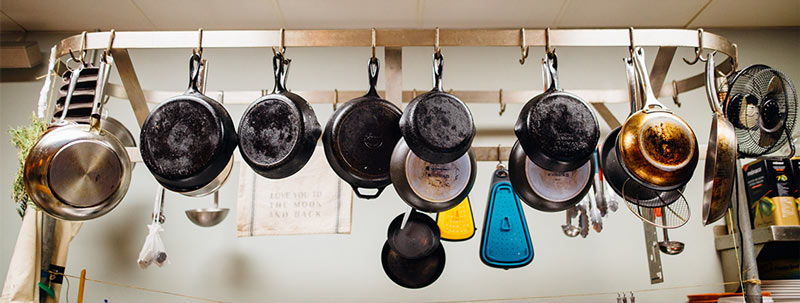
You don’t really need much to make the most of your wok, but you will find the wok accessories below to be very helpful, especially with nonstick qualities. For safety reasons, convenience or practicality, the right accessory will seal the deal and take your cooking experience from great to perfect.
Cooking Utensils for Woks
Your wok must be kept very hot throughout cooking for optimal results. To protect your hands and arms from burns, using cooking utensils with longer handles is best.
Many companies carry extra-long metal and wooden utensils designed specifically for use with a nonstick wok. You’ll find it much easier to reach ingredients at the bottom of a deep wok with these cooking tools.
Metal utensils cannot be used on pans such as the Aroma Housewares AEW-306 5-Quart Electric Wok, since it has a factory nonstick coating. You also won’t want to use stainless steel utensils. But you should have no problem finding silicon or wooden alternatives to make your cooking experience safe and fun.
Hot Handle Holders
Some woks do not have a long handle. Instead, they have sturdy side handles similar to the Lodge P14W3 Pro-Logic Cast Iron.
You will need a set of silicone holders to pick up the hot wok safely. These fit over each of them and can be left on, even when cooking, so you can pick the wok up at a moment’s notice. Alternatively, a nice set of oven mitts or heat-resistant pot holders can do the trick.
Wok Ring
A round-bottomed wok can be used on a stove by setting the wok on a wok ring. The ring prevents the rounded wok from moving about during the cooking process. It also holds it squarely over the heat source to improve heat conduction.
If you have a gas stove, there is always the option to go for something more authentic. Remove your regular grate and switch in a Chinese range grate like the Bosch Slide-In Range Wok Ring. This allows the bottom to dip into the gas flame and creates a sizzling hot cook surface.
Tips and Tricks When Cooking
- Let your wok cool before cleaning it to prevent warping.
- Never use soap to clean your wok. Detergents will strip away the protective nonstick layer of oil from the wok, making the surface sticky and vulnerable to rusting.
*Dishwasher-safe woks are an exception to this rule. - Use a damp cloth, steel wool or salt to scrub food from the wok’s surface if necessary.
- If you use water to clean your wok, place it on the stovetop immediately after and dry it on high heat to prevent rusting.
- To keep your wok from losing its nonstick layer, you need to season it pan after every single use. But don’t worry–it only takes a minute. Once the wok is clean and dry, splash a small amount of seasoning oil into the pan. Wipe it across the entire interior surface of the wok to create a very thin layer. Done!
The Next Steps: From Buying to Cooking

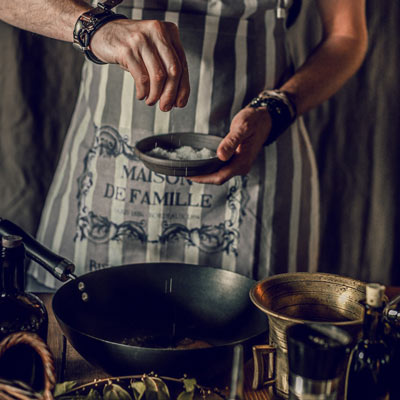
- Shopping: Assess your kitchen and consider your personal preferences before choosing a wok. Do you have space for a traditional wok or only a small wok? Do you need a wok that you can take camping or will it never leave your home? Would you prefer a dishwasher safe wok or do you want to wash and season by hand? Take a breath and brainstorm your ideas and put them into action.
- Once you’ve decided on your ideal wok, it is time to purchase online. We recommend the tried and true Made In Blue Carbon Steel Wok because of its indestructibility and carefully considered design.
- When your purchase arrives and is removed from its packaging, you may notice a dark, oily sheen. This is a temporary coating used to prevent the formation of rust before the pan can be properly seasoned. Fully remove this oil by washing the wok with soap and warm water. This will be the only time you ever use soap on your wok. The factory oil can be difficult to remove and may take several rounds of washing.
- Seasoning: Now that your wok is cleaned, it’s time to season it. Make sure it is completely dry by first heating it up on the stove on high heat for a full 10 minutes. Tilt the wok to ensure that the sides are being dried as well.
- If you’re seasoning a carbon steel wok, the heat of the stove will turn it from black to silver. This means it is ready to be seasoned. Use a folded paper towel to apply a thin layer of high smoke point oil such as grapeseed, avocado or safflower oil.
- Heat the wok again on high for another 10 minutes. This will polymerize the oil on the wok to create a nonstick effect. The pan will acquire a brown, black or blue color during this process. A properly seasoned wok will also be protected from the effects of moisture, so you won’t lose your pan to rust. Now your wok is ready for its first cooking task.
- Cooking: Place your wok on the stove and crank the heat to high. It is best to heat your wok until it smokes a bit before adding any oil or ingredients.
- Once the wok is hot, add cold cooking oil and the ingredients to be prepared. If needed, add a bit of water at a time for steam to be created. Keep in mind that too much water will cool the wok and prevent the ingredients from getting a nice, smoky sear.
- Let your ingredients begin to brown before you toss or flip them over. Since you have seasoned your wok well, you won’t need to worry about food sticking to the pan.
- Once your food is cooked to your liking (look for those crispy edges), remove the wok from the stovetop. If you have a cast iron wok, it is best to transfer the food to a dish immediately. Cast iron holds heat for a long time, so your food will keep cooking in the wok long after removal from the heat source.
- Clean Up: After you are done cooking, let the wok cool before cleaning it to prevent warping. Wipe the wok clean with a paper towel and apply a very thin layer of oil for seasoning. That’s it!
- If scrubbing is required, use a damp sponge, steel wool or oil and salt to create an abrasive scrub, but do not use soap.
- If you have used a damp sponge to clean the wok, immediately heat it on the stove to evaporate any moisture; it should only take a couple minutes. This will keep the wok free of rust.
- Once dry, sweep a thin layer of oil across the entire inner surface of the wok with a paper towel. Now it is seasoned and ready to go for the next meal.
Is a Wok the Best Option for You?
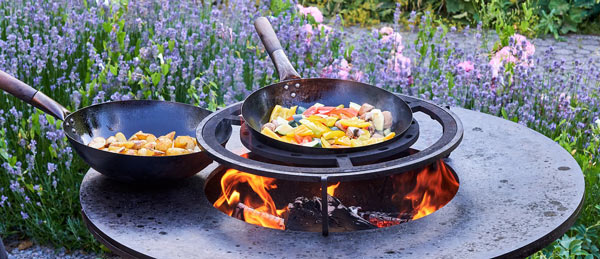
Anyone can experience the joy of cooking with a wok. The simple heating and oil application process needed to season the it is nothing to be intimidated by. After getting into a routine of seasoning, caring for your wok will become second nature.
Wok cooking opens up a world of possibilities for cooking both indoors and outdoors. Take a breath, open up a cookbook and try your hand at meal prep with a wok today to see what you’ve been missing.
